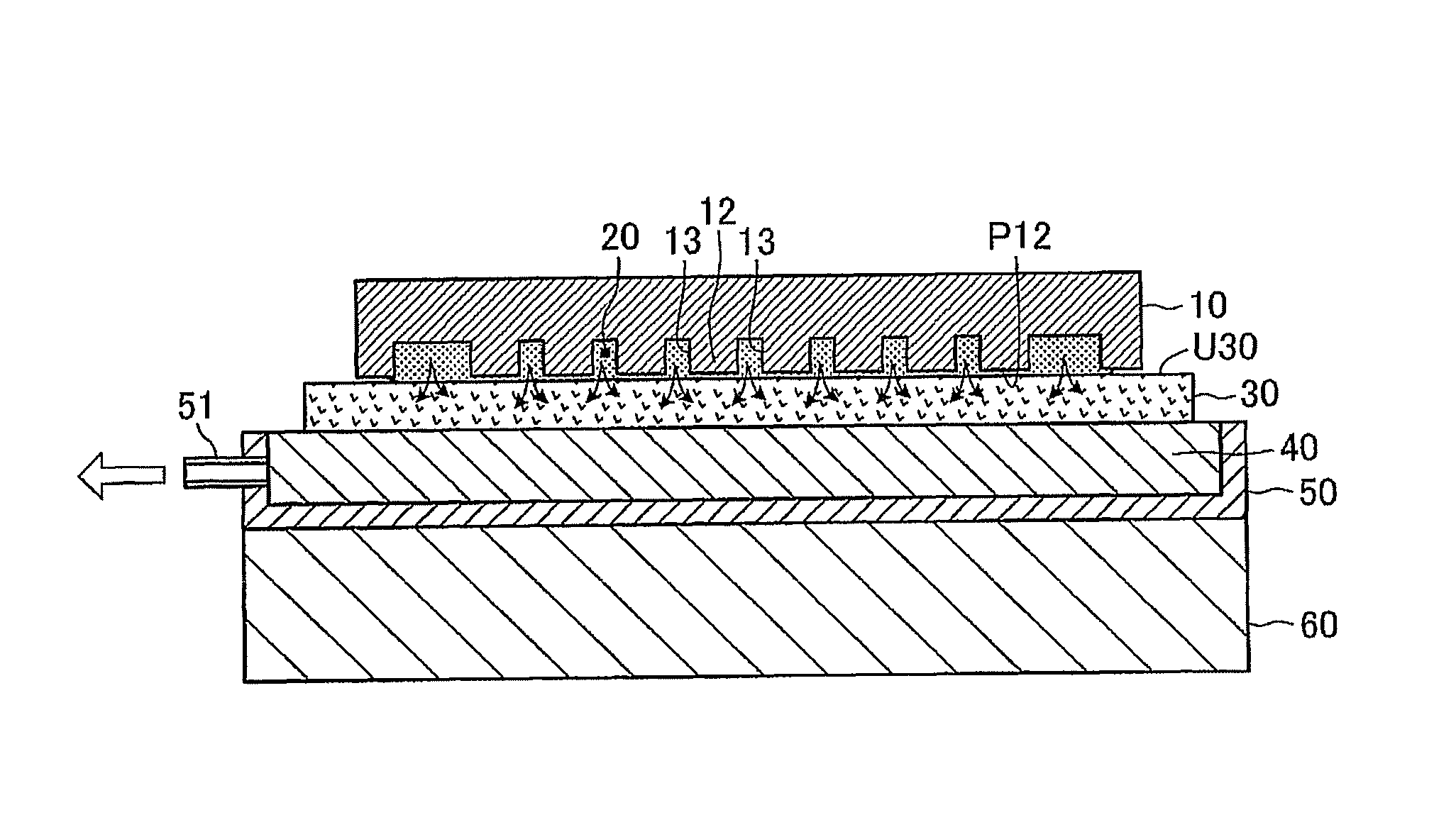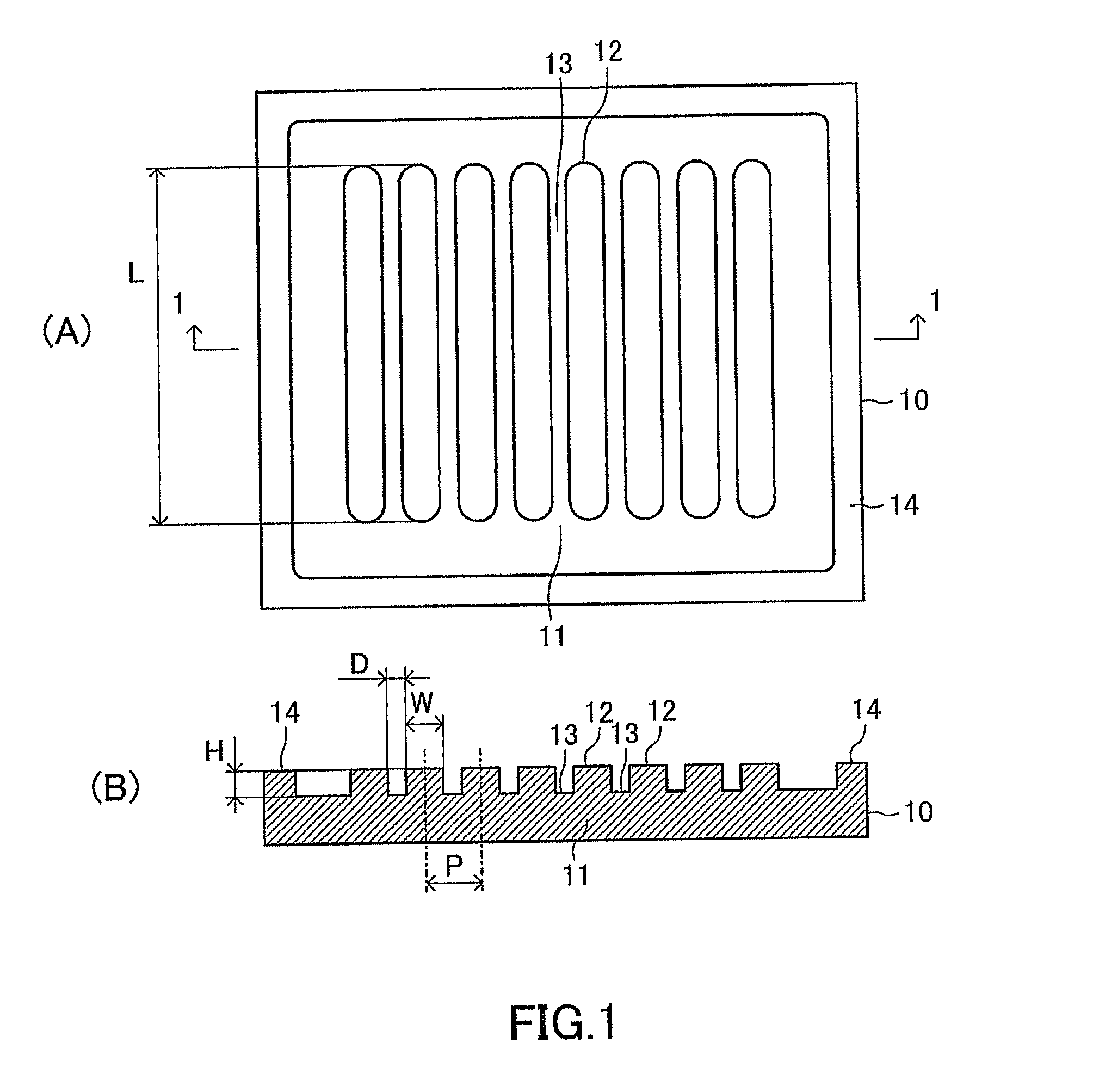Method for manufacturing a three-dimensional forming portion
a three-dimensional forming and manufacturing technology, applied in the field of three-dimensional forming portions, can solve the problems of forming windows by fracturing, cracks and burrs, and rough fracture surfaces, and achieve the effects of short time, short time required for post-dried three-dimensional forming steps, and increased adhesion between ceramic green sheets and slurry
- Summary
- Abstract
- Description
- Claims
- Application Information
AI Technical Summary
Benefits of technology
Problems solved by technology
Method used
Image
Examples
first embodiment
[0074](A Mold Preparation Step)
[0075]First, a mold (a pressing mold, a stamper) 10 shown in FIG. 1 is prepared. (A) of FIG. 1 is a front view of the mold 10. (B) of FIG. 1 is a cross sectional view of the mold 10 cut by a plane along a line 1-1 in (A) of FIG. 1. The mold 10 is made of a dense material such as a metal (e.g., a cemented carbide or a typical alloy). The mold 10 comprises a plurality of convex portions 12 which project or protrude from a flat plate-like base portion 11. The convex portion 12 has a substantially rectangular parallelepiped shape. The plurality of the convex portions 12 are arranged in such a manner that their longitudinal directions are parallel to each other. Accordingly, a concave portion 13 is formed between a pair of the convex portions 12, 12 which are adjacent to each other. The concave portions 13 form a pattern of “convex portions which will be eventually formed on a substrate as three dimensional forming portions”. That is, the mold 10 has “the c...
second embodiment
[0122]A method for manufacturing three dimensional forming portion according to a second embodiment of the present invention will next be described in order of steps. It should be noted that performing order of the following steps can be changed as long as there is no inconsistency.
[0123](A Mold Preparation Step)
[0124]A mold 10 shown in (A) of FIG. 15 is prepared. This mold preparation step is the same as the mold preparation step described above.
[0125](A Substrate Preparation Step)
[0126]A ceramic green sheet 30 shown in (B) of FIG. 15 is prepared. This substrate preparation step is also the same as the substrate preparation step described above.
[0127](A Slurry Preparation Step)
[0128]A slurry 20 shown in (C) of FIG. 15 is prepared. This slurry preparation step is also the same as the slurry preparation step described above.
[0129](A Pre-Dried Three Dimensional Forming Portion Forming Step)
[0130]Subsequently, as shown in (C) of FIG. 15, the ceramic green sheet 30 is placed on a lower ...
PUM
| Property | Measurement | Unit |
|---|---|---|
| distance | aaaaa | aaaaa |
| distance | aaaaa | aaaaa |
| height | aaaaa | aaaaa |
Abstract
Description
Claims
Application Information
 Login to View More
Login to View More - R&D
- Intellectual Property
- Life Sciences
- Materials
- Tech Scout
- Unparalleled Data Quality
- Higher Quality Content
- 60% Fewer Hallucinations
Browse by: Latest US Patents, China's latest patents, Technical Efficacy Thesaurus, Application Domain, Technology Topic, Popular Technical Reports.
© 2025 PatSnap. All rights reserved.Legal|Privacy policy|Modern Slavery Act Transparency Statement|Sitemap|About US| Contact US: help@patsnap.com



